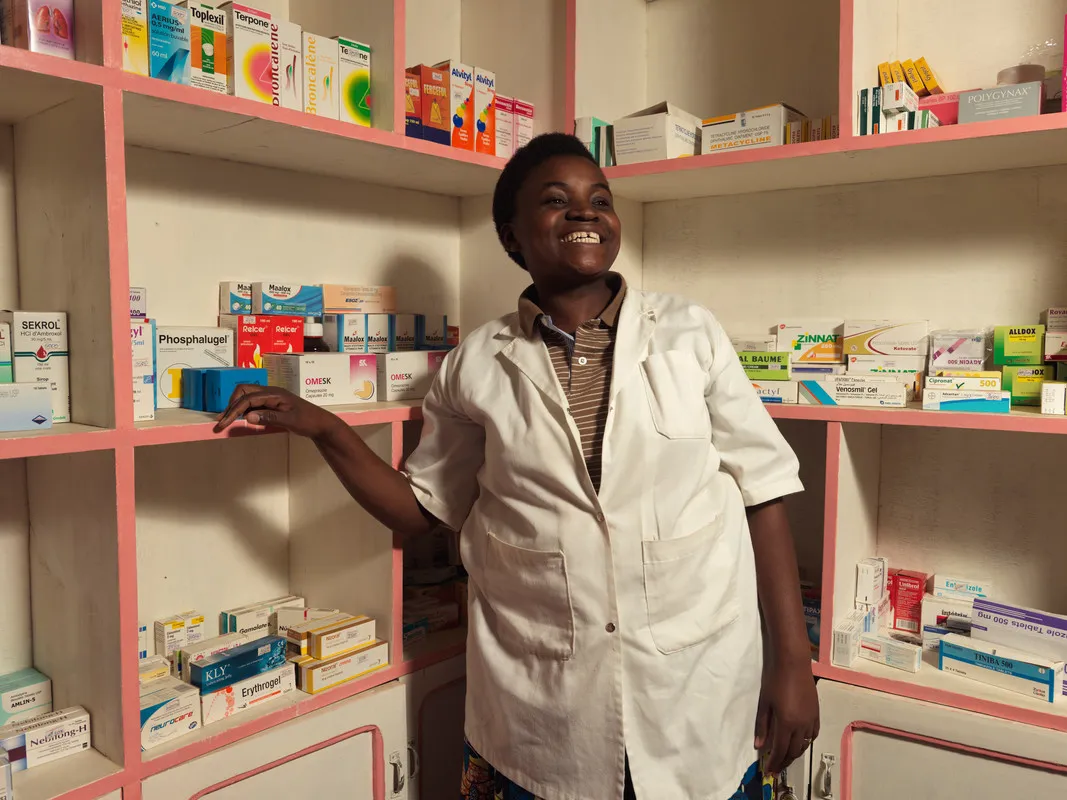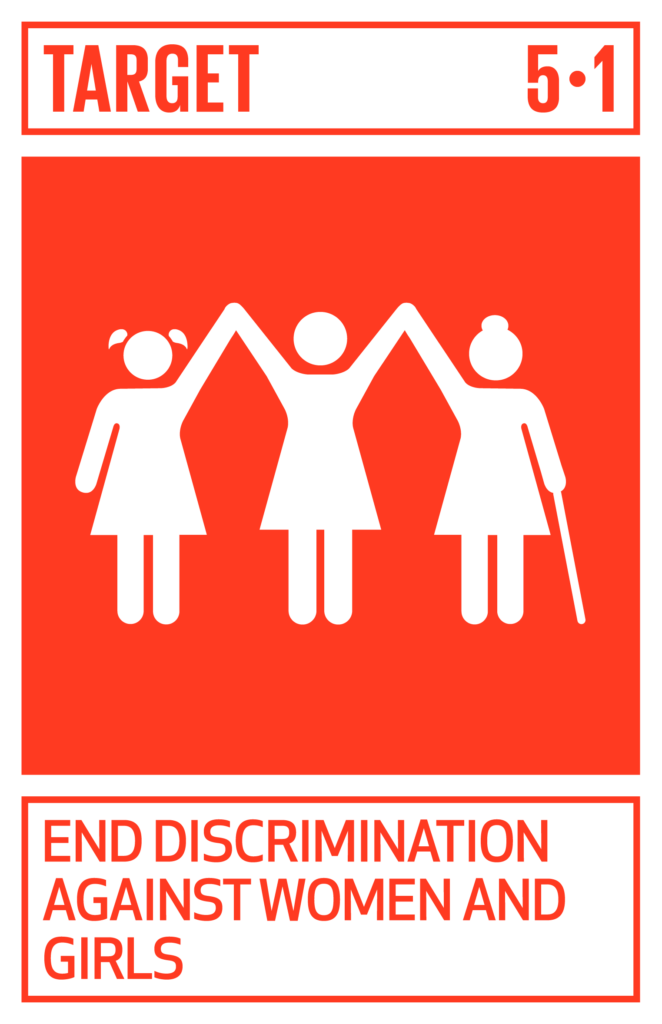 End all forms of discrimination against women and girls everywhere.
End all forms of discrimination against women and girls everywhere.
This target can feel like a big task but each of us and our organizations can make small decisions that end gender discrimination.
What you can do “in the office” to end discrimination against all women and girls:
- Policy
Follow your company’s gender equity and non-discrimination guidelines in recruiting, hiring, performance reviews, training, and sourcing. - Engage men
Engage men in why gender equality makes your company and your community stronger.- To ensure any efforts to engage men are productive and well-designed, CARE recommends working with expert organizations (typically, non-profits) to identify the proper methodology and build capacities in your company and/or deliver programming.
- For additional detail, visit CARE Insights
- For an example of a successful collaboration to engage men toward gender equality, please visit the MenEngage Alliance
- Provide Training
Ensure that women and men receive an equal number of training hours per year and that the training is of equal quality. - Equal Employee Reviews
Ensure that women receive an equal number of performance and career development reviews as men. - Equal Pay
Ensure that women and men are paid the same for the same positions at every employment level.- Conduct pay audits – If no review of pay equity has been completed, ask your company to support regular audits and reviews of pay, including bonuses and overtime pay, and to develop a plan to correct any the gender wage gap.
- Use the audit to determine:
- The frequency of periodic pay audits, including basic pay, overtime and bonuses
- The findings of the last review and whether a plan of action is underway to address any gender wage gap found
- The reason and causes of any gender wage gap
- Consider collecting the following data:
- Ratio of basic salary and pay of women to men by employee category, by significant locations of operation.
- Ratios of standard entry level wage by gender compared to local minimum wage at significant locations of operation.
- Use the audit to determine:
- Uphold high standards – The companies that do the best work here are adopting policies that support ILO convention 190 and promote equal pay, protection against violence and sexual harassment. Ask your company to promote transparency about pay, women’s rights, and ways for women to claim their own rights.
- CARE consults with companies worldwide to review their practices and develop dashboards and strategies for achieving gender equality under ILO Convention 190 rules. We do this with a focus on workplace conditions, ethical supply chains, and women’s empowerment.
- Conduct pay audits – If no review of pay equity has been completed, ask your company to support regular audits and reviews of pay, including bonuses and overtime pay, and to develop a plan to correct any the gender wage gap.
- Paid parental leave
Establish and support paid parental leave time for men and women. Ensure a workplace culture that supports paid parental leave and does not stigmatize it for any gender. Also, make sure that your company’s parental leave policy is available and supported across the company, in every country, and in each work location where it operates.- Ensure that those taking leave have their position guaranteed upon return and that paid parental leave is available throughout your organization and not just at senior or middle management.
- Flexible work
Where possible allow for flexible working hours so that parents may take care of children or aging parents. - End violence and harassment at work
This is critically important to achieving gender equality. Although women and men experience violence and harassment at work, given gender norms and power dynamics, women are far more exposed to violence and harassment. There is a lot you can do to end workplace harassment.- Please see recommendations for Target 5.2 for more steps you can take to end violence and harassment at work.
- Discipline
Review your disciplinary record for employees and determine whether rules and corrective action are applied equitably and fairly across gender. - Suppliers
Do you have an inclusive supply chain? Establish policies and practices to promote economic inclusion when selecting suppliers. For example, seek out and solicit (1) suppliers owned by women; and (2) suppliers owned or staffed by members of vulnerable, marginalized or underrepresented social groups.- While this is important in any location, it can have an outsized positive impact in rural areas where there is less economic opportunity than in cities. Please see the recommendations in this report for “In the Supply Chain” for more detailed suggestions.
- Externally
Look for local community efforts and organizations to support with company approval. - Advocacy
Support your company’s advocacy for gender equality laws and initiatives including but not limited to:- expanding the definition of discrimination against women
- equal pay for work of equal value
- work prohibitions
- family leave
- inheritance/property
- nationality
- human and labor rights in trade policy
- marriage and divorce
- violence against women
- quotas
- pensions
- legal capacity
Case Studies
 Mars
Mars
In 2020, Mars launched Full Potential – its platform to amplify work on gender equality across its workplaces, sourcing communities, and marketplaces where goods and services are advertised and sold. The platform fits within its enterprise wide I&D strategy that focuses on gender balance, workforce representation, and inclusion.
In its workplaces, Mars is committed to continue equal pay for male and female Associates. They are aspiring to reach 100% gender-balanced business leadership teams across the enterprise. And They are advancing Mars approach to flexible work – understanding that remote working opportunities can support individual needs and performance.
In communities, Mars recently expanded their partnership with CARE with a new $10 million investment over the next 5 years aims to empower 50,000 people in cocoa sourcing communities. This work is supplemented by an in initial $5 million contribution to CARE to advance COVID-19 response efforts across four supply chains.
In the marketplace, Mars reviews its advertising to identify and reduce gender bias to track and improve performance over time. In partnership with UN Women’s Unstereotype Alliance Mars is working to remove negative stereotypes in its advertising and increasing access to opportunity by mandating that agency bids must include a female director. And Mars is leveraging r its brands, such as DOVE to raise awareness and support women in sourcing communities.
Mars launched a consumer campaign #HeretoBeHeard to hear from women around the world and will use these insights to expand and amplify its work.
 Colgate-Palmolive
Colgate-Palmolive
Colgate-Palmolive believes creating a diverse, equitable and inclusive culture is key to its growth. That’s why Colgate has made the commitment to ensure gender equity in its hiring, evaluation, and retention. The company now requires a diverse slate of candidates for hiring and extra effort is made to ensure promotions are gender and racially equitable. Colgate reviews job descriptions to eliminate gender bias, and has also instituted training for unconscious bias and allyship. In addition to equal pay, managers are accountable for maintaining inclusive teams.
The company also has a longstanding partnership with Women Unlimited as well as formal leadership programs that benefit women, including Colgate Leadership Challenge and BetterUp programs for mid-level managers, and Global Leadership: Discover and Create the Future, for emerging senior executives. Women lead priority growth areas for the company, including:
- Colgate’s digital transformation, led by Colgate’s Chief Digital Officer
- EltaMD and PCA Skin premium skin health brands
- Tom’s of Maine and Hello Products natural personal care brands
Women also occupy key positions within Colgate’s Global Innovation Group, which itself is led by a female Group President, and includes women in senior leadership roles: Chief R&D Officer, Chief Clinical Officer, Chief Sustainability Officer, Chief Procurement Officer, Vice President, Global Oral Care, Vice President, Global Public Health, and Vice President, Supply Chain, Latin American Division.
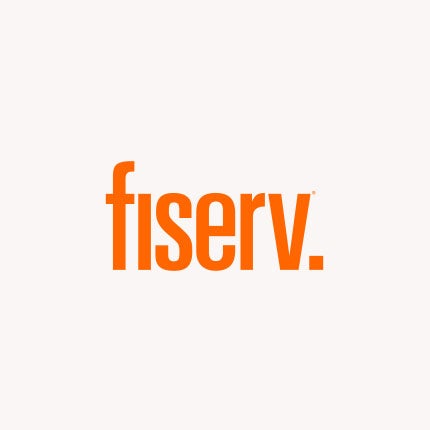 Fiserv
Fiserv
Fiserv has committed to bringing more women and girls into technology careers. The company (1) partners with Women In Technology (WIT) to inspire, hire and empower women in technical fields; (2) provides scholarships to women in technology to ensure inclusive pathways into STEAM; (3) partners with Girls Who Code and the Girl Scouts to provide access to technology at an early age; and (4) works closely with BBBS to provide STEM kits to girls in unrepresented communities.
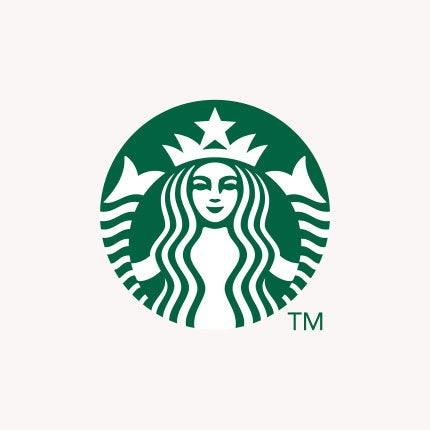 Starbucks
Starbucks
Starbucks is committed to 100 percent gender and racial pay equity. Indeed, Starbucks has achieved — and maintained — 100 percent pay equity for women and men and people of all races performing similar work in the United States. In 2018, when the company first hit that milestone, it also announced that it is committed to reaching 100 percent gender pay equity for our all partners in Starbucks company-operated markets globally. A year later, on March 20, 2019, Starbucks verified that it reached that goal in China and Canada — and it is continuing this work around the world.
Starbucks is also encouraging multinational companies to achieve global gender pay equity, with the support of equal rights champion Billie Jean King and her Leadership Initiative (BJKLI) and leading national women’s organizations, the National Partnership for Women & Families (National Partnership) and the American Association of University Women (AAUW) – by sharing the principles and tools the company uses.
Leveraging its experience working to achieve pay equity in the U.S., Starbucks has formulated pay equity principles – equal footing, transparency and accountability – that employers can implement to help address known, systemic barriers to global pay equity. In the U.S., we’ve also established best practices supporting each of these principles, and going forward we will establish global practices as well. To learn more, please click here.
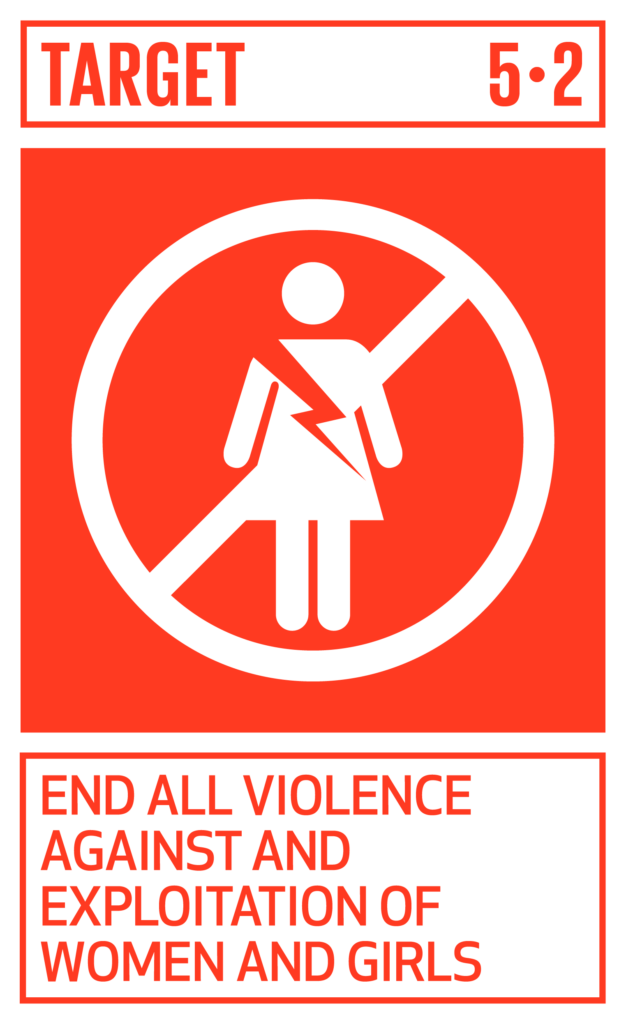 End all violence against and exploitation of women and girls.
End all violence against and exploitation of women and girls.
Keeping everyone safe and free from gender violence is fundamental to a healthy society and workplace. Unfortunately, even in offices sexual harassment occurs.
You can play a major role in ensuring your offices are set up to change social and legal norms to end harassment, violence, and exploitation of women and girls. It’s also good for business and worker retention.
What you can do “in the office” to end harassment, violence, and exploitation of women and girls:
- Follow policy
Follow your company’s gender equity and non-discrimination guidelines in with respect to sexual harassment and abuse. - Have a clear, firm policy
Establish and support a zero tolerance policy towards gender-based violence and harassment. Ensure there is a confidential complaint process. Be clear. No ambiguity.
- Ask senior leaders to lead by:
- Publicly launching and supporting sexual harassment policies, procedures, training and awareness campaigns;
- ‘Walk the talk’ by modelling positive bystander action within the workplace; and
- Include anonymized reports on sexual harassment complaints as a standing agenda item in senior leadership meetings.
- Engage men
Engage men in why gender-based violence is not tolerated and why gender equality benefits us all. Here are steps you can take to engage men. To ensure efforts are productive and well-designed, workshops and programming may be best organized and guided by a third-party, like CARE:- Create structured spaces for men and boys to reflect on masculinities, gender, power and privilege in their lives.
- Allow for conversations with intimate partners, and within families to promote more open communication, equitable relationships, nonviolence, support and trust.
- Bring men together to talk and share testimonies. This will strengthen relationships among male allies to build and expand social support and solidarity against gender-based violence.
- Support to men to facilitate discussions and campaign around gender and masculinities to transform social norms; (See, for example, AB InBev’s #NoExcuse initiative in South Africa to change gender norms).
- For additional detail, visit CARE Insights
- For an example of a successful collaboration to engage men toward gender equality, please visit the MenEngage Alliance
- Engage women
Use your convening power and resources to ensure women understand their rights and protections by organizing training and information sessions and using creative ways to promote learning this information. Here’s an example of work CARE did with women construction workers in Cambodia. - Create workplace champions
Identify individual champions or key figures to promote cultures of change and more equitable working conditions. Researchers in Australia recommend champions be in leadership and middle management to enlist greater support and buy-in for a given approach. Organizations should ensure the role doesn’t fall to one of the few women in positions of leadership. - Establish norms and build a strong culture that ensures safety and equity
- Give surveys to workers regarding sexual harassment allowing employees to share what they have witnessed and/or heard about and what actions to take in response to any incidents.
- Communicate to workers about the company’s gender equality objectives and hold events around key days (e.g. International Women’s Day, International Day of the Girl).
- Ensure that workplace training and communications highlight the role that norms play in perpetuating sexual harassment and promote positive norms instead.
- Monitor norms and practices with worker surveys regarding sexual harassment incidents that are witnessed and/or heard about and communicate what actions were taken/not taken in response to incidents.
- Encourage bystanders to sexual harassment to intervene.
- Review company practices, like incentive structures, to ensure that they are not creating an environment where harassment occurs.
- Hold suppliers to same standard
Require employers along your company’s value chain to have a policy of zero tolerance towards gender-based violence and harassment. - Give appropriate training
- Training should be conducted regularly, contextualized to the organization. However, reaching everyone does not mean everyone gets the same intervention. Vary training for different communities and groups to ensure relevance across diverse populations. For example, men-only programs may promote honest and reflective discussion among men that challenge socially constructed views of masculinity.
- Develop materials and messages in consultation with local violence-against-women service providers. Training should be provided by trainers who are content experts, authentic, and empathetic. For example, the gender of a trainer may be important to create an environment where people can participate freely. In design, training should be intensive and provide opportunities for continued engagement, such that participants can address underlying attitudes and build new norms and behaviors. Training that is interactive and participatory can support new norms and shared meanings while changing attitudes, values, skills, and new ways of relating.
- When working with employees who are issuing a complaint, maintain the following principles
- Allow for a flexible complaints process – Employees should be able to submit complaints through a number of channels at any time of day.
- Confidentiality – the identity and identifying information are to be kept confidential and private unless otherwise voluntarily agreed.
- Ensure consent – obtain the individual’s voluntary informed before any action is taken.
- Do no harm – take appropriate measures to secure immediate safety and refrain from actions that may result in future harm, including in training and communications.
- Adopt a victim and survivor-centered approach – recognize that the rights, needs, and wishes of victims, survivors or complainants are to be placed at the center of the action and for these individuals or groups to be treated with dignity and respect.
- Ensure equal treatment – refrain from discriminating based on gender, sexual orientation, age, ethnicity, ability, migrant status, contractual status, marital status, education status, or otherwise.
- Advance policy and future interventions – draw from the findings and lessons from cases of sexual harassment to raise awareness and to inform future preventive and response measures.
- Draw a timely resolution
- Issue fair sanctions and discipline
For additional reference:
CARE developed a workplace sexual harassment prevention package for garment factories that includes a workplace sexual harassment policy, an implementation guide for factories and comprehensive multimedia training modules for factories to deliver to staff to help them prevent and report sexual harassment.
For more information about CARE’s STOP Sexual Harassment project, visit this website. Visit the site
CARE Australia delivered this summary report on what works to stop sexual harassment in the workplace. Read the report
CARE partnered with Business Fights Poverty to help develop this toolkit for how business can address gender-based violence. Read more
Case Study
 Google
Google
Today, women are 27 times more likely to experience online violence than men. This is why Women Techmakers, Google’s flagship program supporting women in technology, launched a campaign in partnership with Jigsaw to train and engage women developers to build scaled technical solutions to keep women safe online. Now running in five regions, Google’s goal is to train 50,000 women in online safety by the end of year. In support of domestic abuse survivors impacted by shelter-in-place, Search and YouTube, together with the National Network to End Domestic Violence (NNEDV), launched a campaign called #ISeeYou to increase the visibility of available services to women globally. Alongside the campaign, Google granted $2 million in Search ads to domestic violence organizations to show our support for reducing domestic violence.
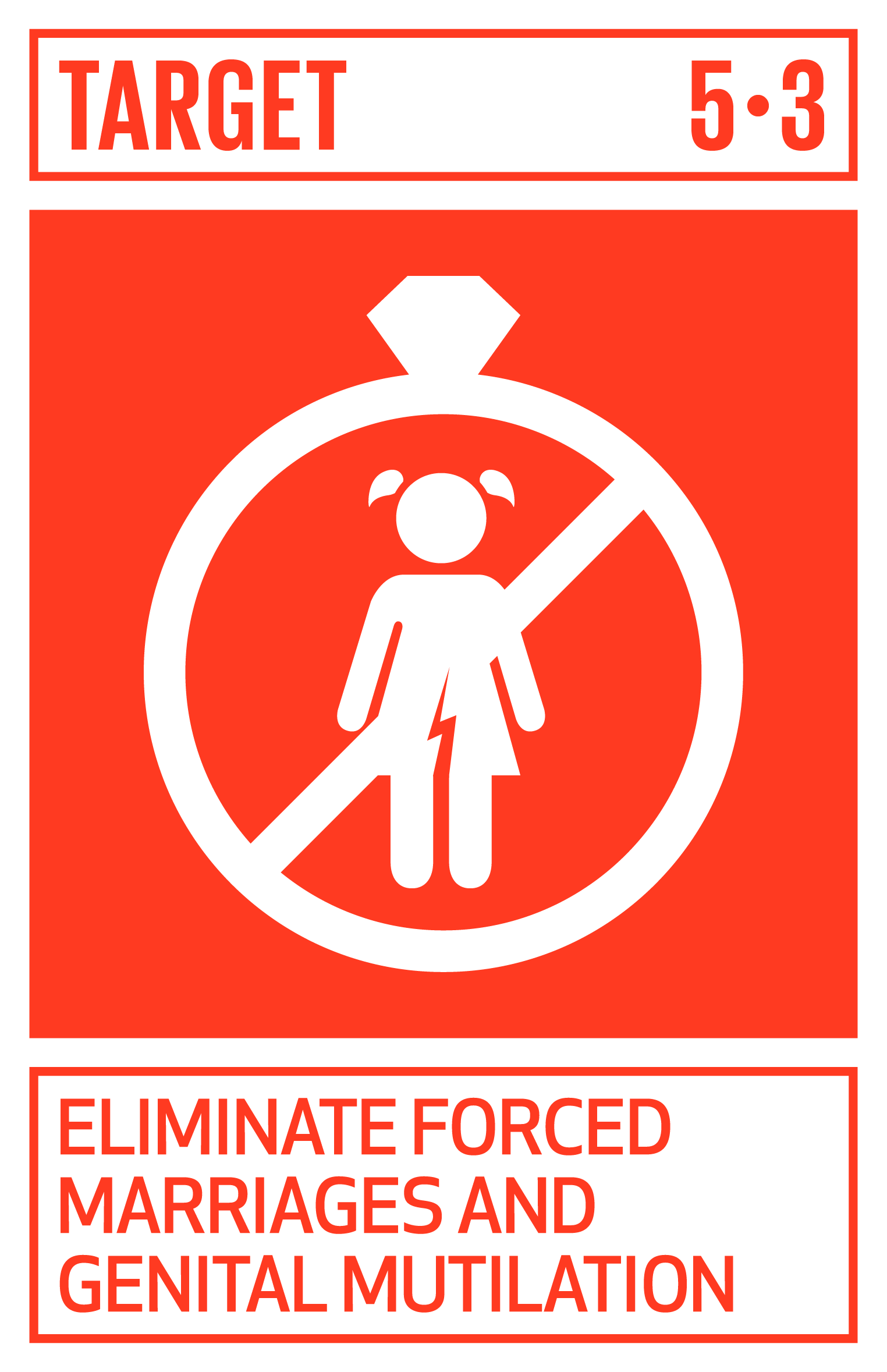 Eliminate all harmful practices, such as child, early and forced marriage and female genital mutilation.
Eliminate all harmful practices, such as child, early and forced marriage and female genital mutilation.
While your day-to-day work may not lend itself to addressing the issue of forced marriages and genital mutilation, companies can and should play a role in changing harmful practices that disadvantage and hurt women and girls.
What you can do “in the office” to eliminate harmful practices:
- Follow your company’s gender equity and non-discrimination guidelines with respect to sexual harassment and abuse.
- Work with your company’s advocacy team to develop strategies for changes to national and local laws to eliminate harmful practices.
- Host workshops for employees and suppliers on why certain practices are harmful. To ensure any efforts are productive and well-designed, CARE recommends working with expert organizations (typically, non-profits) to identify the proper methodology and build capacities in your company and/or deliver programming.
Case Study
 Johnson & Johnson
Johnson & Johnson
In Ethiopia’s Amhara, where rates of child, early and forced marriage are high, Johnson & Johnson implemented Towards Improved Economic and Sexual Reproductive Health Outcomes for Adolescent Girls in Ethiopia (TESFA) to address the economic rights and sexual and reproductive health of ever-married girls. Between 2015-2018, CARE worked with married adolescent girls and developed tested approaches to support positive changes in their lives. TESFA scaled up geographically, reaching 2,124 ever-married girls in 12 kebeles across the woredas of Farta and Gunabegemider. This project has been critical in replicating and geographically scaling a proven program model to improving girls’ sexual reproductive health and economic empowerment, and has advanced innovations in measuring social norms.
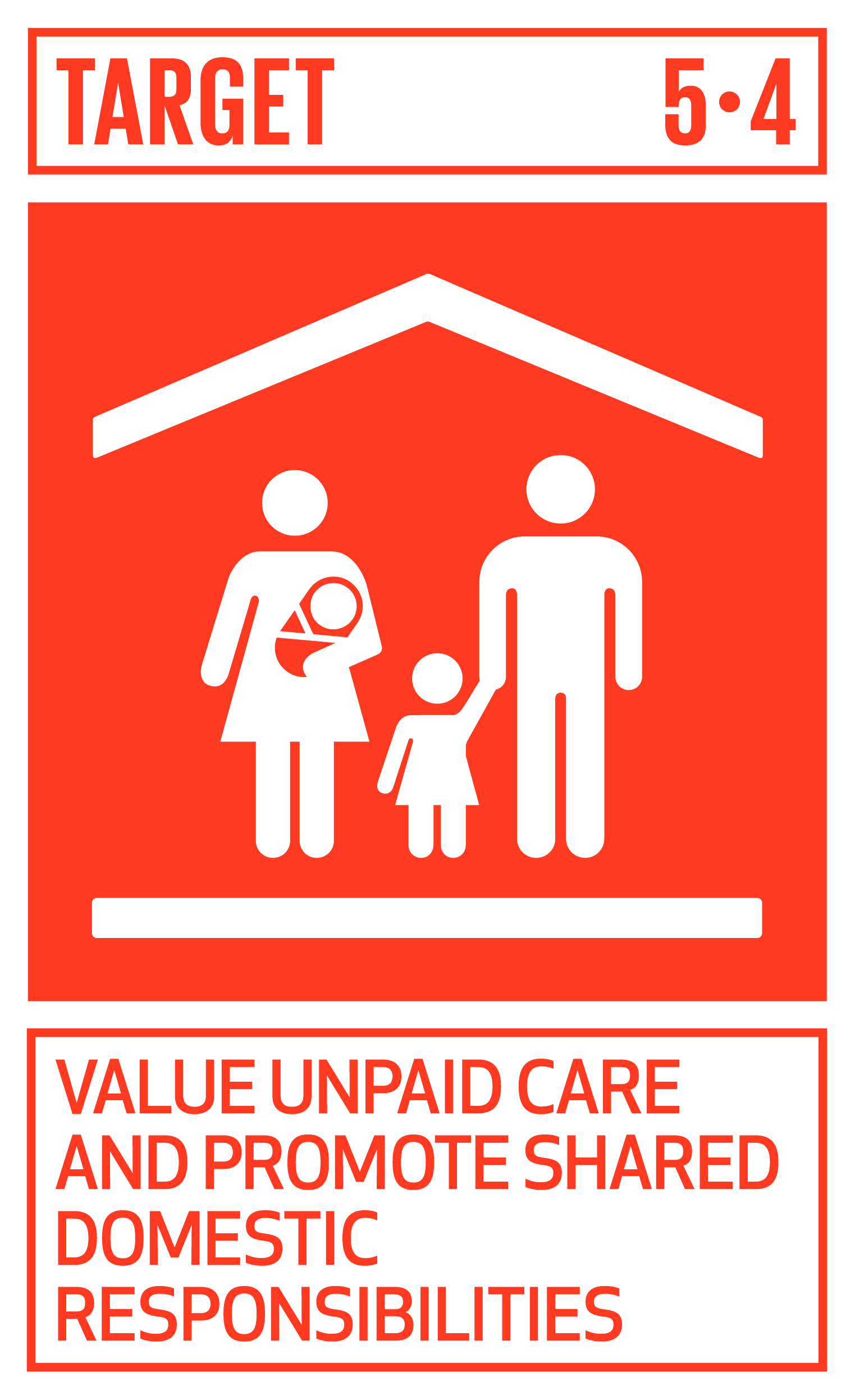 Value unpaid care and promote shared domestic responsibilities.
Value unpaid care and promote shared domestic responsibilities.
Unpaid care is a significant barrier to women’s economic activity because they do most unpaid caretaking and domestic labor. Globally, women spend over three times more time doing unpaid work and care than men. When women also carry a paying job, they bear a double burden.
Companies can and should play a significant role in valuing unpaid care, providing flexibility and space for employees, and changing social norms about caretaking. Doing so increases employee productivity, recruitment, and retention, creates stronger supply chains, and increases customer loyalty.
For systemic change, government, business, and civil society need to do their part to complete the “5 Rs”:
- Recognition of care work as productive, which adds value to the economy and society;
- Reduction of total hours spent on unpaid services;
- Redistribution at the household level, while shifting responsibility to governments and employers; and
- Representation of the most marginalized caregivers in decisions on and design of care policies, services and systems.
- Reward through decent working conditions and equal pay for work of equal value, so as to protect a workforce largely made up of women.
Companies can value and support caretaking through Nos 1, 2, and 5: Recognition, Reduction, and Reward.
What you can do “in the office” to value unpaid care and promote share domestic responsibilities:
- Provide childcare
Create day care and other childcare spaces near the fields and in company facilities.- If your company cannot provide childcare directly, subsidize childcare offsite.
- The same applies to healthcare. Consider partnering with local healthcare providers to offer a healthcare clinic during an off-day in the communities where the majority of workers live.
- Provide easy access to breaks for breastfeeding mothers
Providing easy access to breaks for breastfeeding in a private space enables these women to step away without worrying about retribution for stepping away to take care of their health and their child’s health.
- Allow family-friendly flexible work
Implement and encourage flexible working arrangements. This might include allowing for different work hours and work days, allowing for remote meeting participation where possible, and onsite nursing facilities. - Give specific days off for doctor’s visits
Allowing specific days per month for workers to attend doctor’s appointments can improve workers’ wellbeing and productivity. This time allotment can be structured to avoid any challenges to production goals. - Set up a “Relief Team”
Consider putting in place a team that can replace workers who are absent for healthcare needs. This is especially useful for hourly employees. - Extend Flexibility to Part-Time Workers
Extend flexible working benefits to allow for caretaking to part-time and temporary workers. - Ask women to shape policies
Ensure women’s leadership in and equal contributions to designing, implementing, and evaluating policies related to child care, work schedules, etc. - Engage men
Institute workshops and programs that promote equal responsibilities and engage men and boys. Many men are unaware that everyone benefits when they share domestic and care responsibilities.- To ensure any efforts to engage men are productive and well-designed, CARE recommends working with expert organizations (typically, non-profits) to identify the proper methodology and build capacities in your company and/or deliver programming.
- For additional detail, visit CARE Insights
- For an example of a successful collaboration to engage men toward gender equality, please visit the MenEngage Alliance
- Change social norms
Promote the equitable responsibility for care between women and men through advertising campaigns and flexible work schedules. - Lead by example
When senior leaders take parental leave and take advantage of flexible working arrangements, it communicates that the company practices what it preaches.
Additional resources include the following:
- Oxfam/Unilever’s Business Briefing on Unpaid Care and Domestic Work: Why unpaid care by women and girls matters to business, and how companies can address it Read more
- Work and Opportunities for Women Read more
Case Studies
 Kabbage
Kabbage
Recognizing that many employees have long commutes to the office, Kabbage, implemented flexible work schedules to allow for shared domestic responsibilities. They quickly found that worker productivity or output did not diminish and that both male and female colleagues felt less stress to rush home.
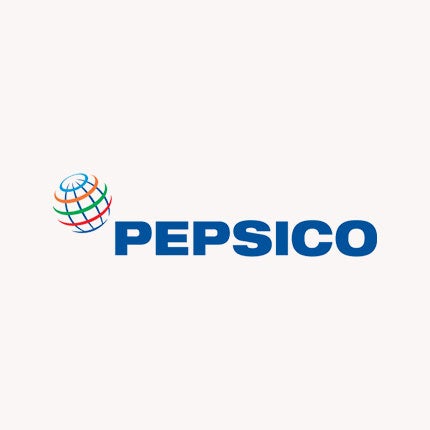 PepsiCo
PepsiCo
PepsiCo has implemented a number of programs to support mothers and caretakers at all levels of the company. These initiatives included:
- Providing on-site childcare at PepsiCo’s New York headquarters and near-site childcare at PepsiCo Foods North America headquarters in Texas. The company also provides on-site or near-site childcare at international locations, including Mexico, India, Egypt, and Pakistan.
- In more than half of company locations worldwide with 500 or more employees, the company has either dedicated mother’s rooms, wellness rooms, or alternate space available for nursing mothers and the company is actively working to expand the number of PepsiCo locations with facilities for nursing mothers in the coming years.
- Making available back-up child and elder care services are available through third party providers when a regular care provider is unavailable.
- Launching “Ready to Return” in 2017 in New York for professionals who are re-entering the workforce after taking time off to care for a loved one. Ready to Return is a 10-week paid program designed for experienced professionals who have been out of the corporate workforce for more than two years and are looking to return. To help ease the transition, participants are provided with mentoring and coaching support, training to refresh skills and formal and informal networking opportunities with PepsiCo employees. In 2018, Ready to Return was expanded to Latin America, and now includes Brazil, Chile, and Mexico. This program is a demonstration of PepsiCo’s support for working caregivers in our communities around the world and a means to build the female talent pool at PepsiCo.
- Expanding parental leave in the U.S., starting in 2021, to be 6-8 weeks for mothers and 6 weeks for parents — a total of 12-14 weeks.
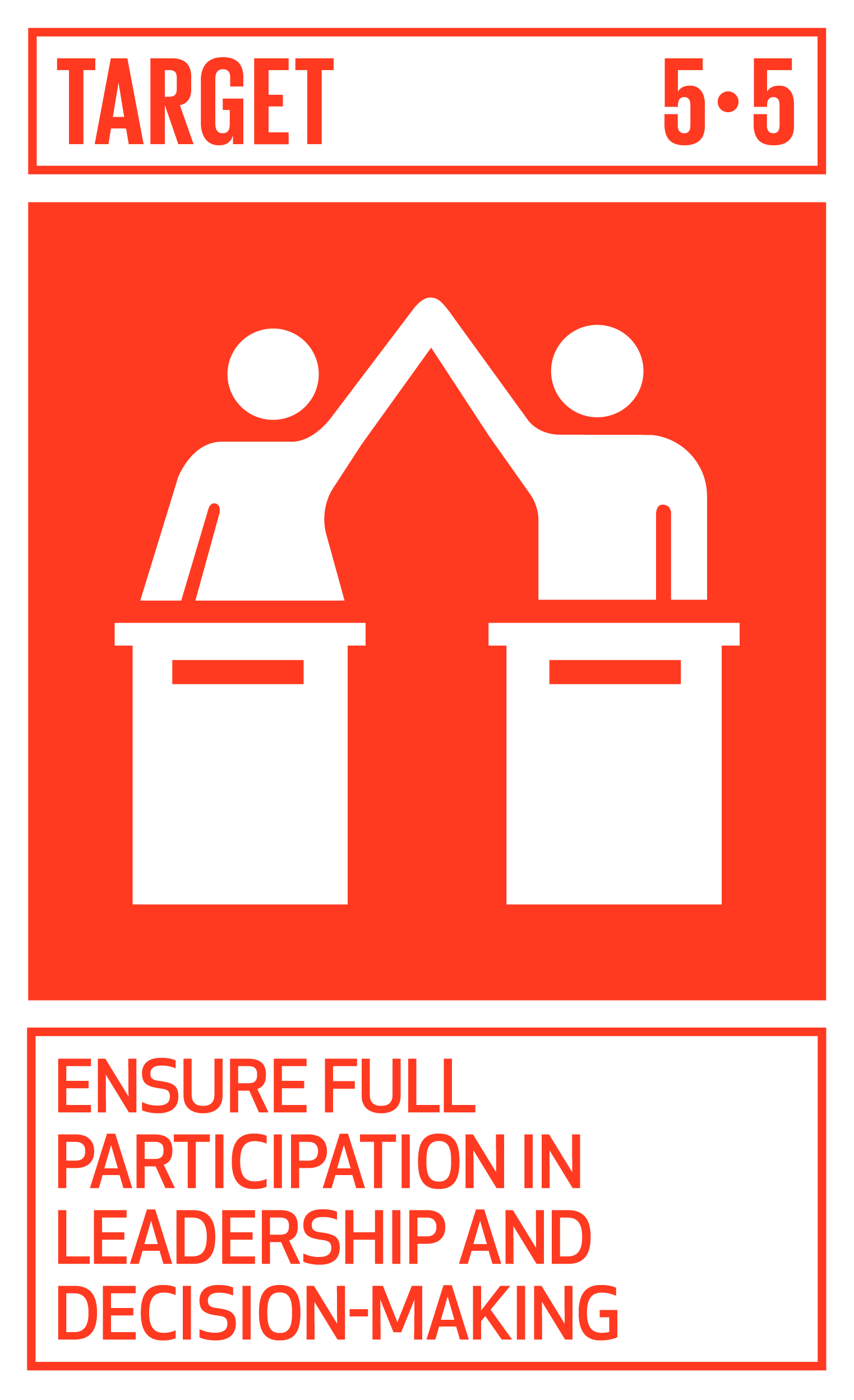 Ensure full participation in leadership and decision-making.
Ensure full participation in leadership and decision-making.
When women lead, outcomes are often better than when women are not in decision-making roles. One of the key indicators for this target is the percentage of companies in any given country with a female as the top manager, and the share of middle or senior management positions filled by a female. Here, companies play a central role in achieving gender equality.
What you can do “in the office” to ensure full participation in leadership and decision-making:
- Hire equal
Ensure your hiring practices are gender-equal. - Hire women at every level
Work to increase representation of women in management positions, skilled (non-management) positions, and unskilled jobs. - Train and promote women
Look for every opportunity to train and promote women to leadership positions.
- Give voice and connect women to leaders
Empower women to speak up about unequal treatment without fear of or actual retribution. Support worker-based committees and spaces for women leaders to connect with and influence factory leaders and other decision-makers. - Partner with gender-equal entities
If your company has business relationships with farmers’ cooperatives or associations, consider working only with those that have a significant proportion of women representatives in leadership positions and women members in farmers’ cooperatives and/or associations. - Engage in the community
Look for ways to influence positive gender outcomes in the communities where your company works. This may include partnering with local non-profits and engaging family members of your employees. Efforts to build women’s skills, capabilities, and access to resources, so they are better enabled to make decisions, both productive decisions and household decisions, and fully participate in economic activity, are vital to increasing the number of women in leadership roles.
Case Studies
 Kabbage
Kabbage
Kabbage observed that it had a dearth of women in technical positions at the company. To remedy this, the company overhauled its hiring procedures to mandate gender parity on interviewee candidate slates before the interviewing process can begin. Additionally, Kabbage changed the language in its job postings, included more inclusive pictures on our website, and offered a more flexible interview process so that women are able to choose what time of day works best. These small changes dramatically improved the hiring and retention of women. Among their central learnings from this work was that focusing community over company product was helpful in attracting and retaining a diverse workforce and that small changes can have a big impact.
 Fiserv
Fiserv
Fiserv is committed to ensuring women have every opportunity to succeed and lead at the company. To this end, Fiserv provides an expansive gender neutral paid parental leave benefit, Women’s Leadership development programming, and has a global Women’s Impact Network designed to support, connect, and empower women employees and their allies for engagement, internal mobility, and career development and progression.
 The Coca-Cola Company
The Coca-Cola Company
The Coca-Cola Company (TCCC) strives for a gender-balanced workplace. The Company believes that investing in and empowering women not only directly benefits them, but also its business and its communities. According to publicly available statistics, companies in the top quartile for gender diversity on executive teams are 21% more likely to outperform on profitability. TCCC has an aspiration to be 50% driven by women and focuses on growing and developing female leadership and its female workforce overall. To make progress, the Company has leaned into a number of initiatives:
In 2007, TCCC started a Global Women’s Leadership Council (GWLC), comprised ofwomen and men executives, that focused on accelerating the development and promotion of women into roles of increasing responsibility and influence. The GWLC did this through actions across 3 pillars:
- Sponsorship: A sponsorship program for female leaders matched to Executive Leadership Team members including the CEO.
- Pipeline: Launching the Women in Leadership program, a global System program designed to accelerate the leadership capabilities of women in the pipeline at mid-level positions. More than 850 female employees to date have participated in the program.
- Bias Awareness: In order to help foster an inclusive culture and to engage men as allies in the pursuit of our diversity and inclusion aspirations, The Coca-Cola Company expanded the GWLC to include women and men.
The Company also established a Women’s LINC Business Resource Group (BRG), designed to engage employees in support of our gender diversity and inclusion priorities, with a mission to empower women to lead, inspire and connect. The BRG now has approximately 1,500 members in the U.S., and there also several other chapters around the world.
TCCC’s efforts have included gender-neutral paid parental leave and committing to paying all associates fairly and equitably. The company has been conducting pay equity analyses (with regard to gender and race/ethnicity) in the U.S. for the Corporate function for several years. In 2019, it extended the pay equity analysis for gender globally across all business units (now operating units) of the company, as well as employees of Coca-Cola North America. Between 2017 and September 2020 women in senior leadership roles globally in the Company increased 2.4% from 31.4% to 33.8%. In 2020, four new North America Operations Zone Presidents were appointed – all were qualified women.
Coca-Cola Women in STEM (CWIS) is an internal organization dedicated to contributing to the talent pipeline at The Coca-Cola Company by raising awareness of STEM (Science, Technology, Engineering and Math) opportunities in the community, and by empowering, educating and inspiring the women of Coca-Cola to excel in leadership under the STEM umbrella. CWIS has about 5000 members and reaches thousands of middle/high school and college students each year though STEM events and scholarships.
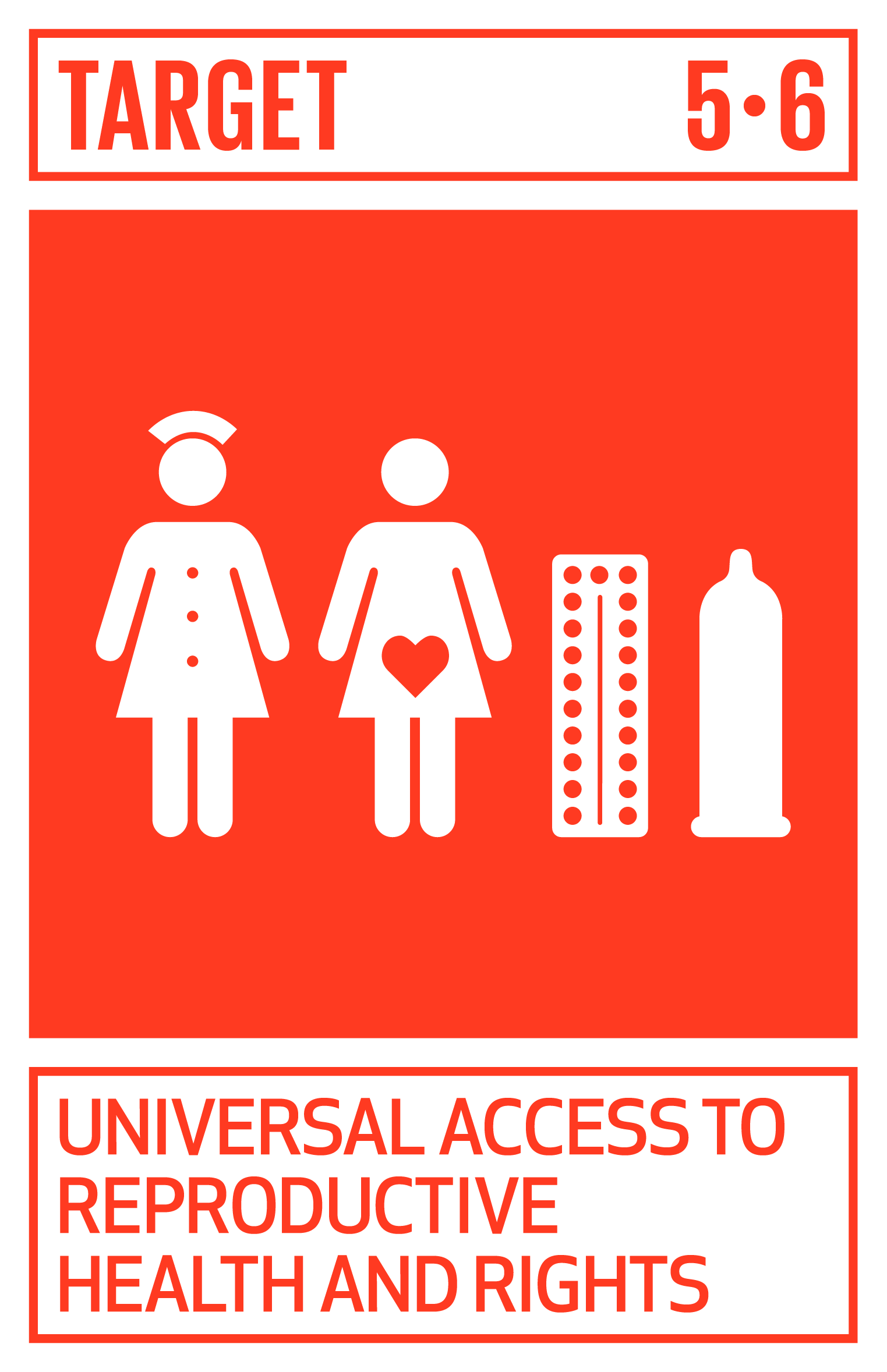 Universal access to reproductive rights and health.
Universal access to reproductive rights and health.
When women control their own health care decisions, including reproductive health decisions, and have access to health care, their ability to thrive, at work and at home, increases. Companies play an important role in providing the benefit of access to care in many countries and in promoting the norms that allow for accessible reproductive care.
What you can do “in the office” to provide universal access to reproductive rights and health:
- Provide reproductive health benefits
Provide benefits that cover reproductive health services. This will vary from country to country. - Set the tone
Encourage women to take the time to go to the doctor and take time to care for their health. - Make a public commitment
Publicly celebrate and encourage health through workplace programs and expertise to reach women with needed information and services. - Provide information
Access to basic health information can be difficult to find, especially for women. You can help connect your workers to information on family planning, menstrual hygiene, nutrition, and pre-natal care. - Support agency of workers
Ground health care policies in volunteerism and informed consent. Support a woman’s ability to choose when one becomes a parent. - Advocate
Where legal change is necessary, work with your company’s advocacy team to ensure the law empowers women to make their own informed decisions about their reproductive and physical health, including, for example: determining whether to have sexual intercourse with their husband or partner; deciding on use of contraception; and deciding on their own healthcare.
Case Studies
 Kabbage
Kabbage
Kabbage offers all of its employees free healthcare, including reproductive health services.
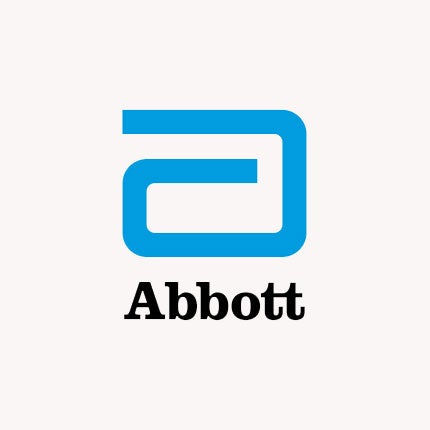 Abbott
Abbott
NCDs in Humanitarian Crises
According to the United Nations, more than 80 million people today are displaced from their homes by conflict, natural disasters and other emergencies.
In response, governments, organizations and companies have focused on meeting urgent needs for food, water and shelter. But for many people, particularly in the aftermath of crisis, basic needs include uninterrupted care and management of chronic diseases – also known as noncommunicable diseases, or NCDs, such as diabetes and cardiovascular disease. Despite this, chronic diseases often don’t receive enough attention in these humanitarian settings, according to the World Health Organization.
Working together with CARE, the global healthcare company Abbott and its foundation the Abbott Fund launched one of the world’s first programs aimed at filling this gap – creating a new model, both scalable and replicable, for the effective prevention and care of NCDs in challenging settings around the world.
The three-year program in Marawi City, Philippines is focused on supporting internally displaced people affected by diabetes, hypertension and obesity. Program work includes screening to identify people with NCDs and those at risk of developing NCDs, and expanding access to needed clinical care.
A key focus for the program is mobilizing displaced communities to fill gaps in prevention and care, with an emphasis on empowering women. With an in-depth understanding of the needs of their neighbors, women volunteers lead “NCD Clubs” to advance disease prevention and management, and provide vital peer support. The program also strengthens the ability of local healthcare systems to manage NCDs, and raises awareness and educates on the prevention and control of NCDs.
Initial results are promising. Baseline screening found that more than half (59%) of people identified as diabetic were previously undiagnosed. And following targeted interventions, 46% of diabetic and pre-diabetic patients saw a decrease in average blood glucose (HbA1c) levels, which is an indicator of better glucose control and lower risk of complications.
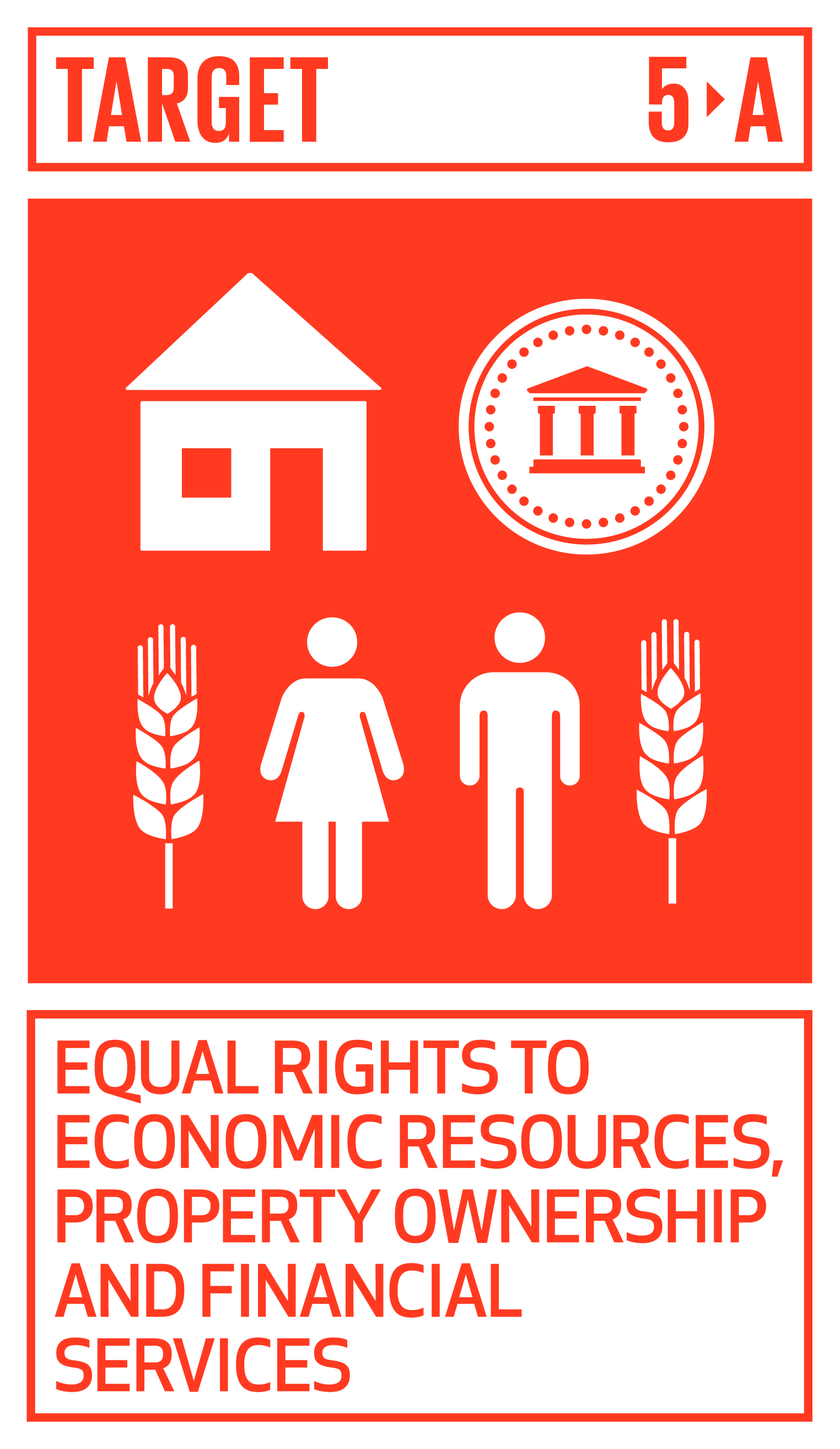 Equal rights to economic resources, property ownership and financial services.
Equal rights to economic resources, property ownership and financial services.
Although this target is focused on increasing female agricultural land ownership, companies can make also help women to build wealth and economic stability in the office as well.
What you can do “in the office” to provide equal rights to economic resources, property ownership and financial services:
- Connect women to resources
Support connecting women to financial services through savings groups, mobile money, and financial services that take women’s needs into account. CARE has set up Village Savings and Loans Associations across the world to help women build with financial resources to launch and support their businesses. - Advocate
Work with your company’s advocacy team to push for legislative and legal changes to allow for female-land ownership when it is prohibited and to ensure equitable access to capital and resources for female agricultural business owners.
Case Study
 Kabbage
Kabbage
Kabbage’s business model is tied to the goal of democratizing access to financial services. By leveraging the customer’s real-time, online data, including transaction information, bank data, accounting information, and shipping records, to name a few of the 2.5+ million live connections, Kabbage is able to blindly underwrite businesses regardless of their race or gender. As a result, over 30% of its customers are women- and/or minority- owned small business.
 Google
Google
“Women Will” is Google’s program for economic opportunity for women, The program is making an impact in 49 countries, supporting women’s economic potential through digital skills and community building. The company’s data-driven insights show that while the gender gap persists, women are unable to truly thrive at home and at work. During the COVID-19 pandemic, through Women Will, Google’s online career development and entrepreneurship workshops reached over 80,000 women across the globe.
 Mastercard
Mastercard
The Mastercard Center for Inclusive Growth realized that without training, digital wages may offer little to no benefit. While digital wages programs may succeed in providing workers with accounts and transitioning factories away from cash payments, this may be a token gesture with little impact if workers are not trained and encouraged to use digital financial services. In 2017, for instance, when the garment industry in India digitized wages, there was limited training provided to workers. Three years later, research found that male and female workers are still withdrawing 100 percent of their wages on payday. By contrast, through The Mastercard Center for Inclusive Growth’s HERfinance Digital Wages programs in Bangladesh, workers have been trained on using their mobile money accounts to send remittances to families, save money in their accounts (which helps them to better weather future shocks), and make payments for products in areas around the factory. As a result, they became active mobile money users: women were conducting approximately eight transactions per month and men 13 transactions. If gender is considered from the start, digital payments can enable women’s economic empowerment. In Bangladesh, for example, women are often forced to hand over some or all of their wages to husbands or male family members. Paying women digitally does not necessarily alleviate this problem and may, in some cases, make it worse. The HERfinance Digital Wages programs have therefore devoted significant time to discussing the advantages of joint financial decision-making with both men and women, leading to female participants reporting increased control over their wages. If the specific barriers women face are accounted for and incorporated into training programs, there is an increased likelihood that gender norms can be shifted, paving the way for greater women’s empowerment.
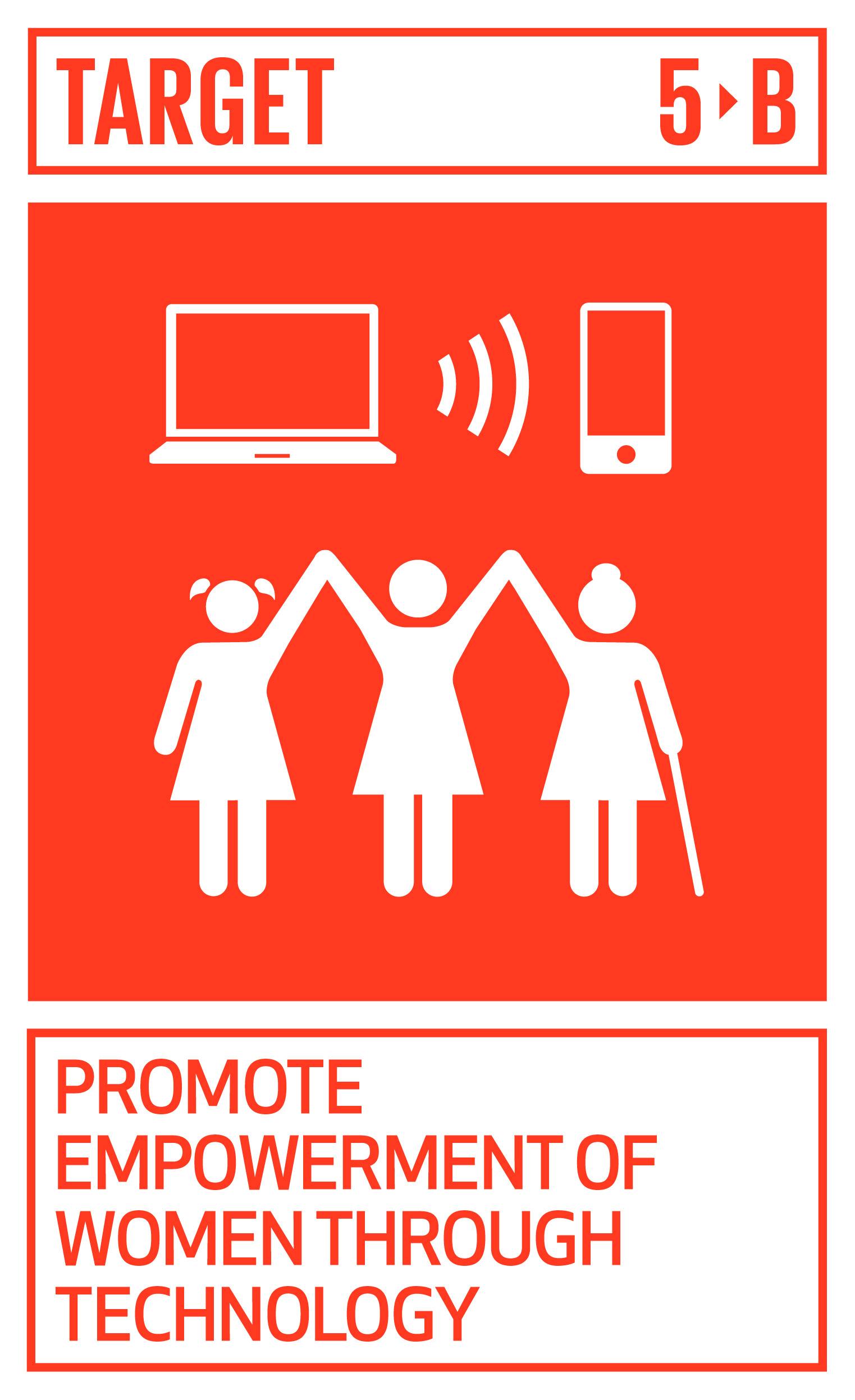 Promote empowerment of women through technology.
Promote empowerment of women through technology.
Technology can lower barriers for financial access, communication, and female empowerment. Companies have the opportunity to leverage technology to use technology to achieve gender equality in significant ways.
What you can do “in the office” to promote empowerment of women through technology:
- Provide access
For workers of all types, your company can provide access to information and technology and use technology to increase women’s participation in programs. - Provide privacy
Allow workers to submit surveys, complaints, and concerns through technology so that they can speak freely. - Provide digital wages
This can save time for women and ensure they can directly access and control their wages by helping them to send, save and make payments securely through their mobile phone.
Case Studies
 Microsoft
Microsoft
In response to the COVID-19 pandemic and its social and economic impacts, Microsoft focused on providing critical digital support for the world’s first responders, governments, and communities around three areas: (1) leveraging digital technology in concerted efforts to protect public health; (2) promoting inclusive economic recovery; and (3) ensuring digital safety.
To this end, in part, Microsoft launched a Global Skills Initiative, committing to helping 25 million people acquire new digital skills needed for the COVID-19 economy. This comprehensive technology initiative will bring together every part of the company, combining existing and new resources from LinkedIn, GitHub, and Microsoft. Microsoft is also partnering with local and international humanitarian organizations in communities most at risk on COVID-19 providing technology and services to help scale needed response programming. Examples of efforts with a focus on women and children include:
- Microsoft, in partnership with CARE Egypt Foundation and the Egyptian Government, has expanded Tawar w Ghayar program aiming at improving skilling and employability of Egyptian underserved youth by upskilling 250,000 youth upskilled on Digital Skills, Employability & Business Skills, empower 7,500 Youth with Career Coaching & Guiding sessions and match 4,000 youth with job opportunities.
- Partnering with CARE to help create a new modern data architecture and business intelligence reporting for its COVID-19 “Women Respond” gender and data initiative to enable CARE to identify and respond to the most urgent needs of women and girls, and advocate for equitable access to services and resources for women.
- The accelerated deployment of the UNICEF Learning Passport. Girls are at most risk losing access to education during the crisis and not returning to school post-crisis. The Learning Passport will extend education for children online and offline.
- AI for Humanitarian Action has created the focus area Needs of Women & Children where the company will seek nonprofit projects demonstrating use of AI to ensure the safety and wellbeing of women and children around the world.
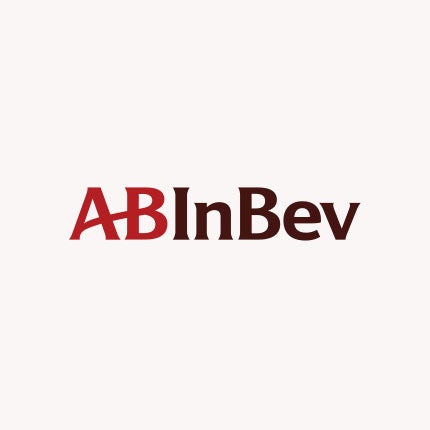 AB InBev
AB InBev
In Columbia, Pony Malta is one of AB InBev’s leading malt beverages’ brand. The drink is popular with girls, many of whom are tech savvy and football fans. Yet, girls are underrepresented in videogames. With the support of Columbia’s ministry of technology, and NGOs in Colombia. and simultaneously launched in Ecuador and Bolivia with its non-alcohol beverage brands, AB InBev launched an initiative to increase the representation of women in video games. Specifically, in FIFA Clubs Pro, a football game, it is only possible to create a male avatar. For this reason, many girl gamers are forced to make their football career in FIFA with avatars that do not define them. To feel represented in FIFA 2021, a group of girls created their own female avatars with the male player creation tools and, together with Pony Malta, formed SHE F.C, the first women’s club in FIFA Clubs Pro.
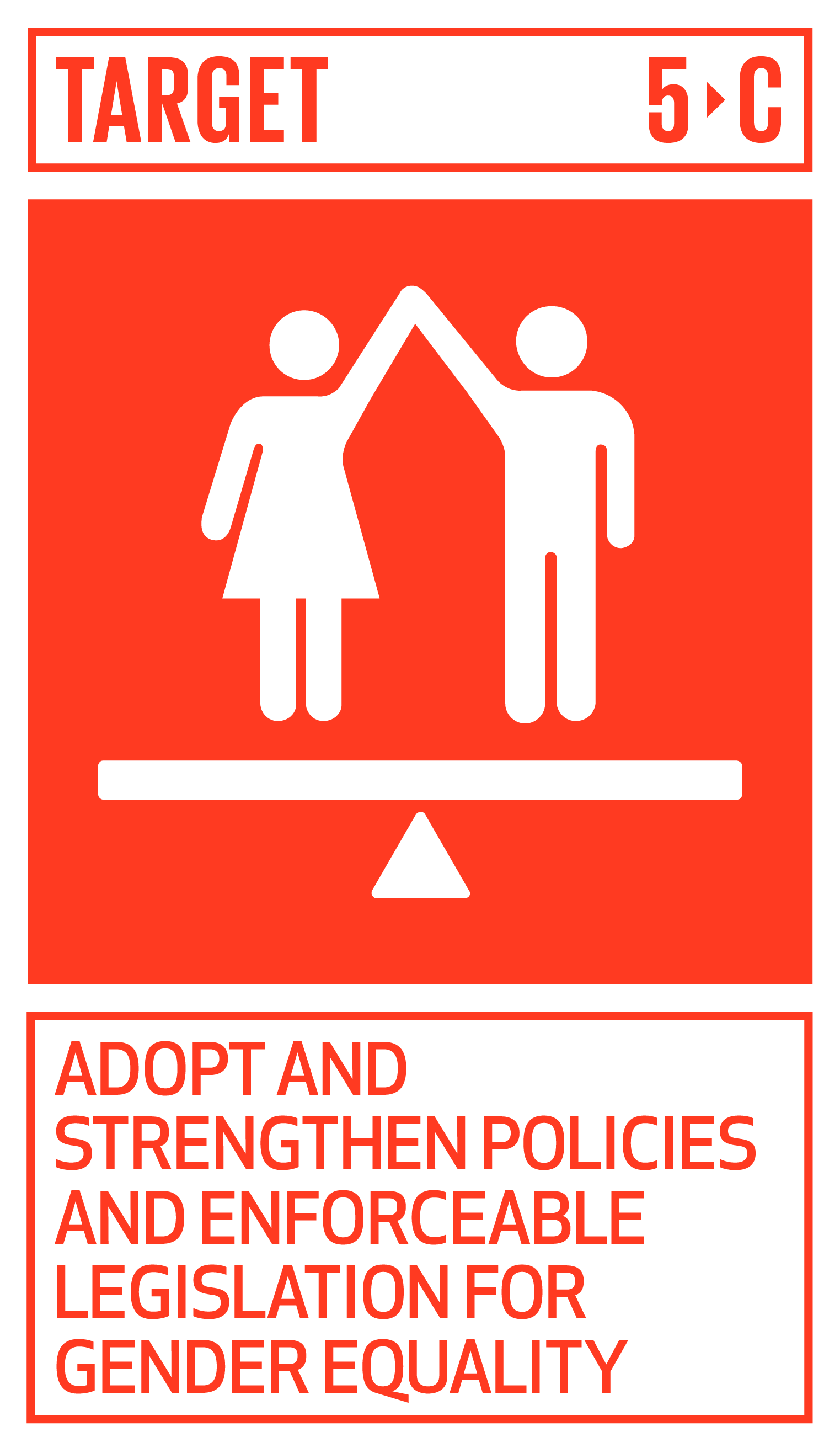 Adopt and strengthen policies and enforceable legislation for gender equality.
Adopt and strengthen policies and enforceable legislation for gender equality.
Every company can play a role in advocating for legislative action and legal change in the countries where they operate. Indeed, the influence and voice of the private sector can often shape political action.
What you can do “in the office” to adopt and strengthen policies and enforceable legislation for gender equality:
- Work with your corporate advocacy team to identify legal changes that will strengthen women’s rights and protect women workers. Consider partnering with your suppliers and civil society organizations.
- Support your company’s advocacy for gender equality laws and initiatives including but not limited to:
- expanding the definition of discrimination against women
- equal pay for work of equal value
- work prohibitions
- family leave
- inheritance/property
- nationality
- marriage and divorce
- violence against women
- quotas
- pensions
- legal capacity
Case Study
 Kabbage
Kabbage
Kabbage believes that a more equitable and diverse workforce ultimately begets better, more inclusive, products. A large part of its company culture is “coming as you are” as Kabbage wants its employees to feel as comfortable as possible. Externally, Kabbage has long advocated for gender and LGTBQ equality federally and in the State of Georgia (where it is headquartered). In 2019, Kabbage joined the Business Coalition for the Equality Act, a group of leading U.S. employers that support the passage of the Equality Act.

